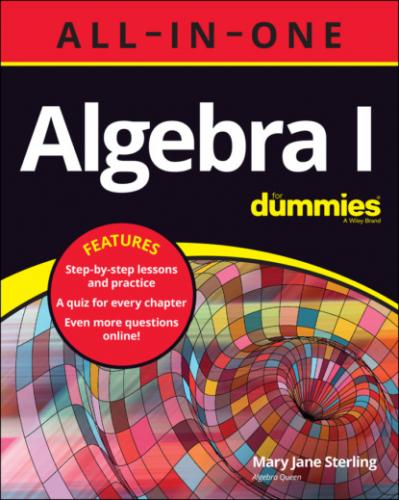19 A recipe calls for 2 teaspoons of cinnamon and 4 cups of flour. You need to increase the flour to 6 cups. To keep the ingredients proportional, how many teaspoons of cinnamon should you use?
20 A factory produces two faulty tablets for every 500 tablets it produces. How many faulty tablets would you expect to find in a shipment of 1,250?
Finding Common Denominators
Before you can add or subtract fractions, you need to find a common denominator for them. Ideally, that common denominator is the least common multiple (the smallest number that each of the denominators can divide into without a remainder). A method of last resort, though, is to multiply the denominators together. Doing so gives you a number that the denominators divide evenly. You may have to work with larger numbers using this method, but you can always reduce the fractions at the end.
And then, there’s the box method. This method is especially helpful when you have three or more fractions to deal with — and they have relatively large denominators.
Creating common denominators from multiples of factors
Common denominators (the same numbers in the denominators) are necessary for adding, subtracting, and comparing fractions. Carefully selected fractions that are equal to the number 1 are used to create common denominators because multiplying by 1 doesn’t change a number’s value.
Follow these steps to find a common denominator for two fractions and write the equivalent fractions:
1 Find the least common multiple of the two denominators — the smallest number that both denominators divide evenly.First, look to see if you can determine the common multiple by simple observation; you may know some multiples of the two numbers. If you find the common multiple by observation, go directly to Step 4. (Do not pass Go; do not collect $200.)
2 If the common multiple isn’t easily determined, start your search by choosing the larger denominator.Check to see if the smaller denominator divides the larger one evenly. If it does, then you’ve found the common denominator. Go to Step 4.
3 Check consecutive multiples of the larger denominator until you find one that the smaller one divides.That’s your common denominator.
4 When you find a common denominator, rewrite both fractions as equivalent fractions with that denominator.Multiply both numerator and denominator of each fraction by the equivalent of 1 that creates fractions with the common denominator.
A. 72. Look at the multiples of 24: 24, 48, 72, 96. You can stop with the multiple 72, because that’s also a multiple of 18. The LCD is 72.
Q. How would you write the fractions
A. The fractions
21
22 Rewrite the fractions
23 Rewrite the fractions
24 Rewrite the fractions
25 Rewrite the fractions
26 Rewrite the fractions
Using the box method
The box method is a very nicely structured process that has an added bonus. You can use it to find the least common denominator of two or more fractions, and you can also use it to find the greatest common factor of two or more numbers.
Consider the addition problem
1 Write the three denominators in an “upside-down” division box.
2 Outside the box, on the left, write a number that divides all of the denominators evenly.For this first try, I’ll use 2.
3 Divide 2 into each denominator, putting the quotients under the respective denominators.
4 Now put a division box around these quotients and find another divisor. Repeat the process until there are no more common factors.This time I chose 3. The order of choices doesn’t really matter.One more time:
5 You’re finished when the quotients don’t have any common factors. All three have to have the same common factor. You can’t divide just two of them.
So, what do you have here? First, you have the greatest common factor of the three numbers:
But you’re looking for a common denominator! To get that, find the product of those three numbers in the GCF times the product of the three numbers left on the bottom.
The least common denominator is:
